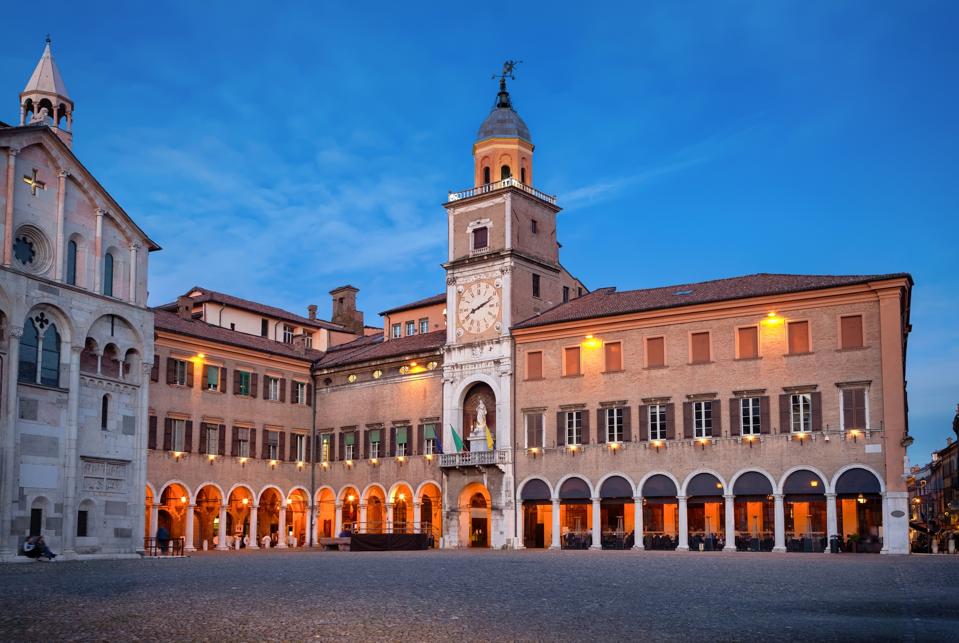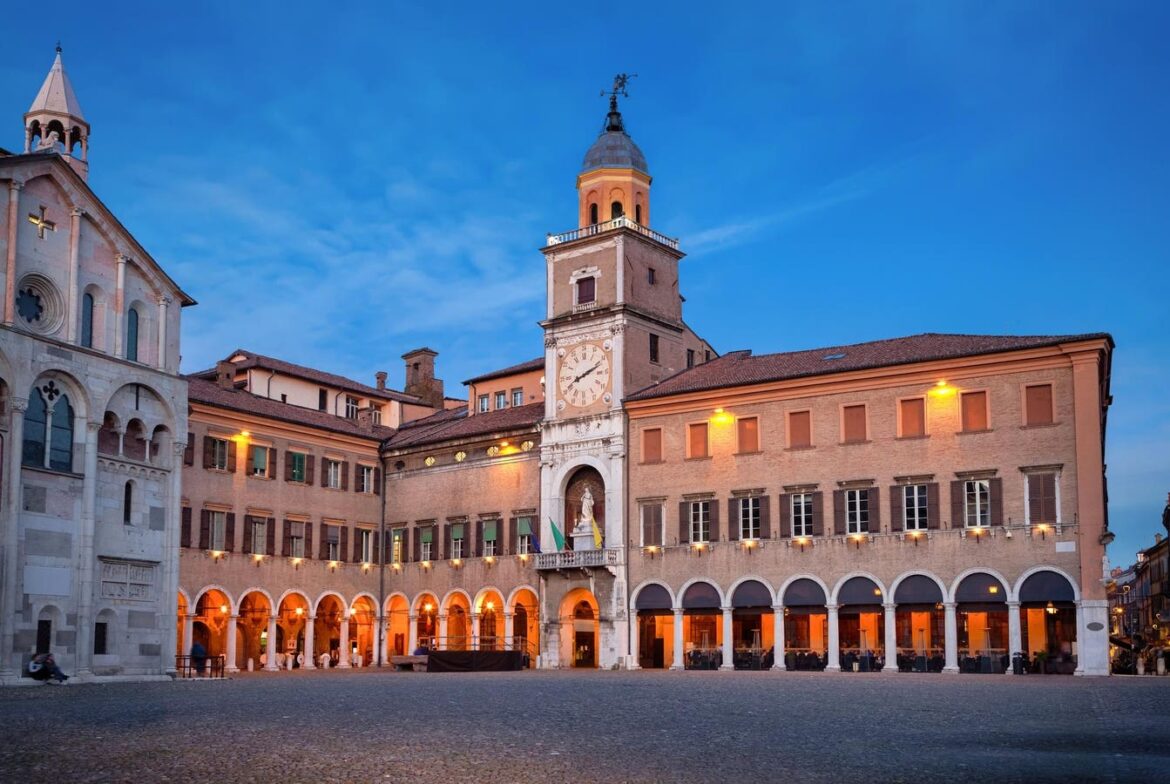
Modena, Italy. Historic building of Town Hall at dusk
getty
Not all Michelin-starred restaurants are closely tied to their hometowns. Despite the tire company launching the guide in 1889—followed by the culinary guide’s debut in 1900—to help the French discover interesting restaurants in other regions, some multi-starred restaurants seem to be going for the odd and ridiculous. Let’s not mention the blue risotto I had in Alba last year.
MILAN, ITALY – MAY 17: Chef Massimo Bottura attends the press conference for the ‘Al Meni’ International Cusine Festival on May 17, 2018 in Milan, Italy. (Photo by Pier Marco Tacca/Getty Images)
Getty Images
Massimo Bottura is a native son of Modena and without a doubt his small empire has done more than anything to draw tourism to this charming, small city. Keep in mind that the Osteria Francescana seats about 30 a night with a menu that hovers around 350 euro. Wine pairings are extra. I was told that there is a two-year waiting list for the restaurant.
He also has a handful of small and less expensive restaurants and a hotel in the countryside called Casa Maria Luigi. It’s definitely niche tourism, but this chef has single-handedly put his small town on the map. It doesn’t hurt to have an American wife who also put the message out loud and clear to those of us who love a unique, Italian food experience.
The Space
MODENA, ITALY – MARCH 27: A view through the picture-window of Franceschetta 58, Italian chef Massimo Bottura’s second restaurant, on March 27, 2017 in Modena, Italy. Franceschetta 58 is an informal dining brasserie and bar which Bottura opened in 2011, sixteen years after he opened his three-Michelin-star restaurant Osteria Francescana in the same city. It is located in what was a tyre shop within walking distance from Modena’s medieval city centre and according to their website is “a light filled, colorful and lively restaurant animated by mix and match vintage plates, glassware and silverware”. (Photo by David Silverman/Getty Images)
Getty Images
The tiny entrance to Francescana is barely noticeable in the center of Modena. Clearly a lot of the consumer base is American given the costly price point and cutting-edge take on food. I find that, generally Anglo populations are more invested in complex food journeys that tell a story, since most of the residents of those countries don’t have access to really great simple food, made from local products, as generally happens in the Med.
Bottura is a story teller, as are many of the members of his staff. If you are going to have Michelin-stars you want to have a story: otherwise, it becomes just a mess based on blue risotto that may not help keep that star.
Chef’s stories are playful, such as “Opps I dropped the lemon tart,” an ode to an inverted pastry. They are also thought-provoking such as Mare Nostrum, a riff on pollution in the Italian—and international—seas.
One of Bottura’s most evocative dishes.
Paolo Terzi Photography
Certain dishes are just scrumptious. That popsicle of foie gras is something I could eat for breakfast every day. The five stages of Parmigiano-Reggiano is fascinating. Five different age statements are made in five different ways, including crunchy and melted versions.
I almost wish he had presented the same type of cheese in five different ways. Adding the second variable of age statements makes it more complicated to understand exactly how the diverse cooking process affects the cheese.
Wine and Stories
The wine cellar is impressive with lots of older vintages of great Bordeaux. There is a pairing option on the menu—which I generally prefer—but pairing is always so subjective. The few we had really didn’t work for me, with the exception of Sauternes with foie gras.
The dessert cart!
Paolo Terzi Photography
Given the limited number of tables guests have a lot of access to the staff. This hard-core group is pulling some tough hours, as the restaurant also serves lunch.
The staff also seem to wax poetic in presenting the dishes. They speak of how these food groups represent classic Italian traditions and it is a joy to engage with them.
No one spends that amount of time and dedication at a restaurant if they are not beyond-dedicated to service. This might actually be the best part of Francescana: how in love the staff is with Bottura’s story.


Dining and Cooking